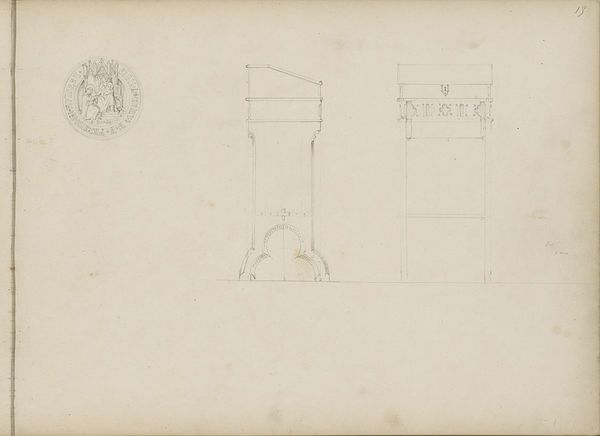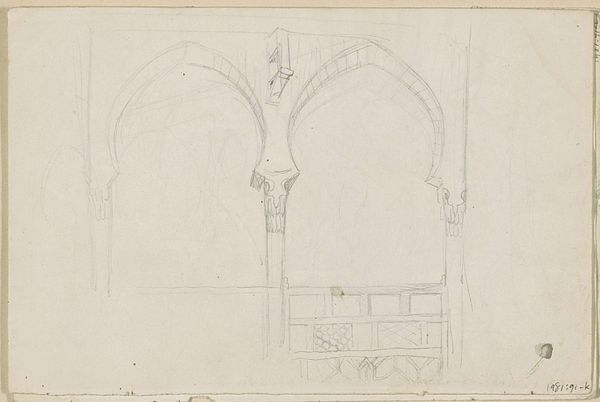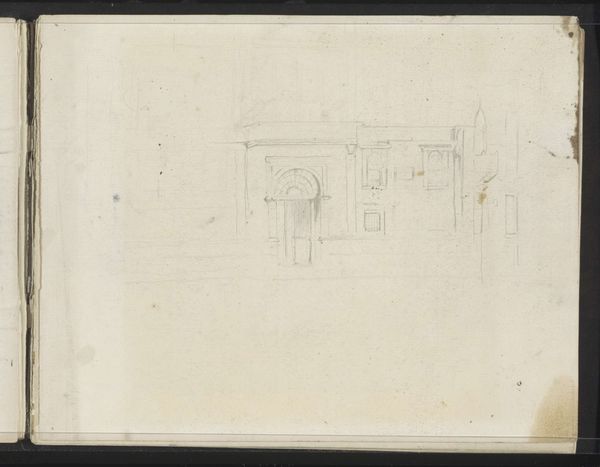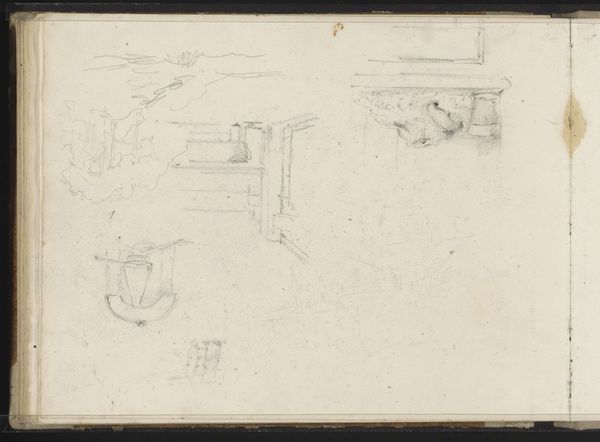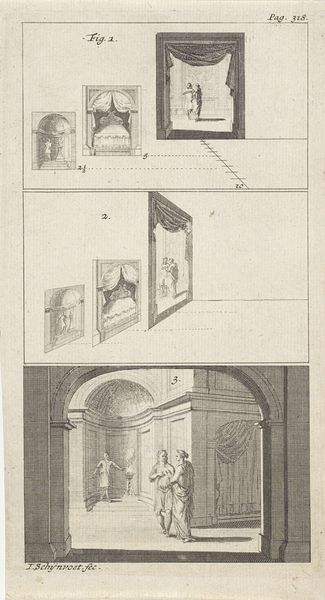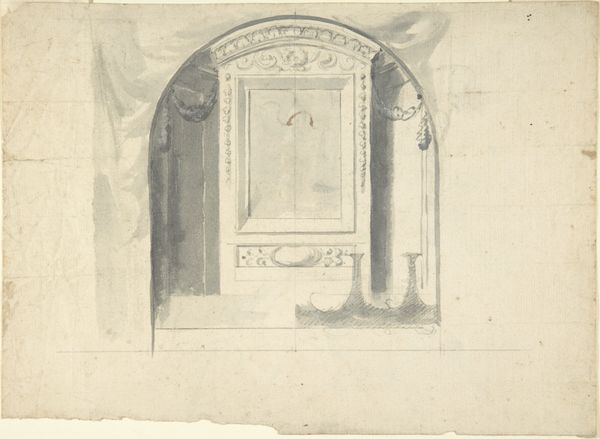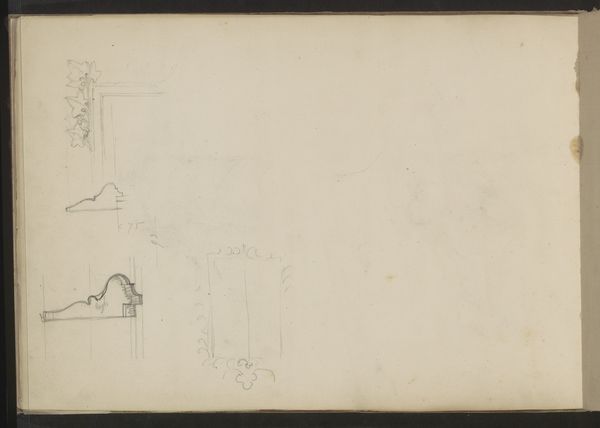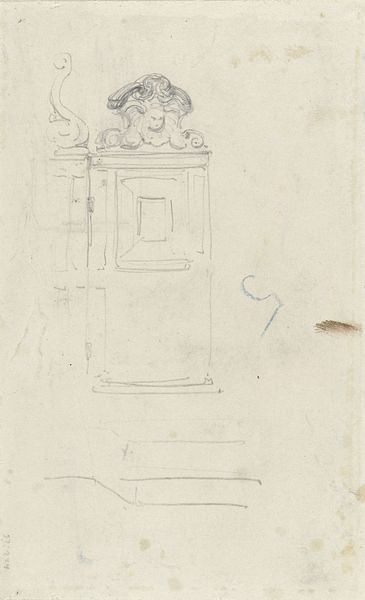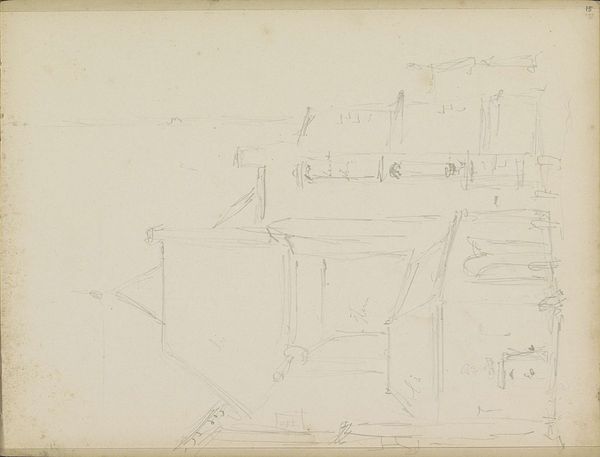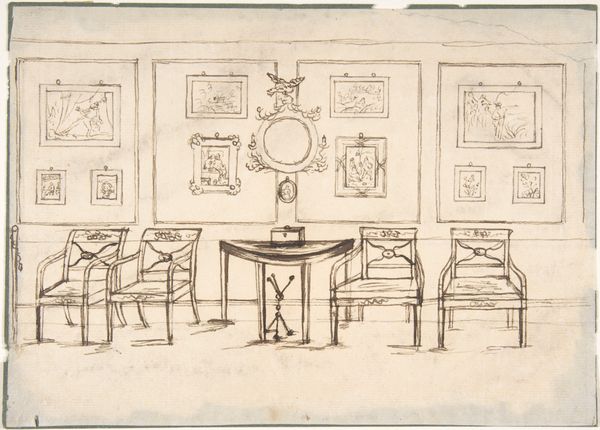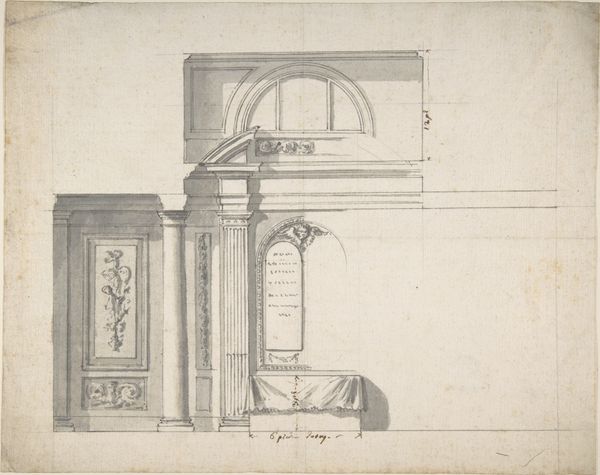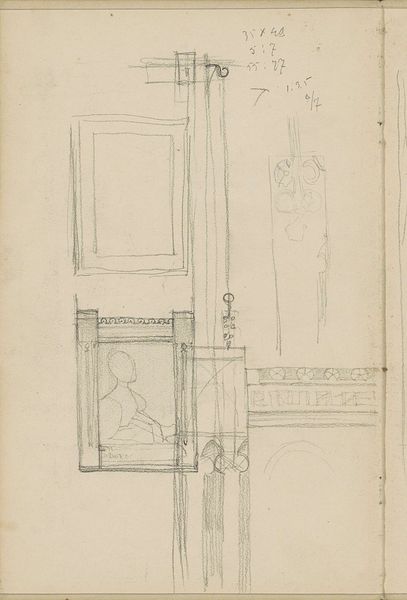
Copyright: Rijks Museum: Open Domain
Editor: Here we have Willem de Famars Testas's drawing *Gevels*, made between 1858 and 1860 using graphite on paper. It feels very much like a sketch, an intimate look into architectural details. What catches your eye? How would you interpret the assembly of imagery depicted in the work? Curator: I’m drawn to the layering of cultural markers. Note the variations in window styles. Consider their symbolism. The lattice work suggests both privacy and a filtered view of the world, a visual representation of societal norms and restrictions. Windows, portals to look outside and, just as significant, through which we ourselves can be seen. Editor: So the differing window designs are significant? Curator: Precisely. Look also at the Arabic calligraphy above the window – its elegant script would have communicated status and belief to those who could read it. And then a European-style doorway right next to it! Each facade element is a symbol carrying a memory, contributing to the collective cultural identity of the place. Even a quickly executed graphite drawing holds a surprising amount of information. How would a person walking here experience this mix of forms? Editor: I never considered architecture as something that has continuity or even collective memory; now I see it represents so much more than shelter. Curator: It truly does. Paying close attention to what the artist chooses to focus on adds another layer to our experience and understanding. Architecture preserves identity and reveals social change. Editor: Thanks, seeing this through the lens of cultural memory makes it even more meaningful. Curator: Agreed, visual symbols offer us a potent and personal route into history.
Comments
No comments
Be the first to comment and join the conversation on the ultimate creative platform.
